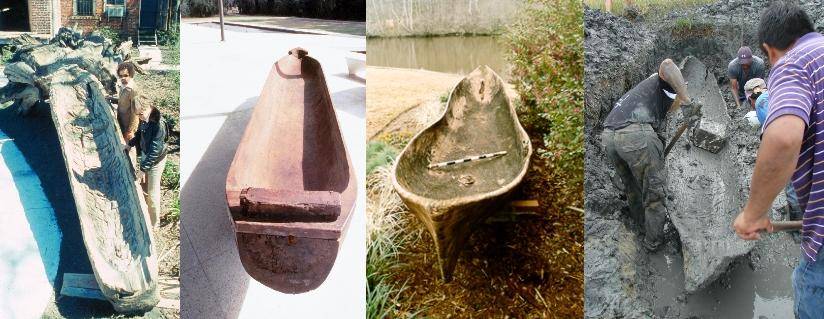As early as the Middle Archaic period (5000BC- 3000BC), Native Americans travelled the vast waterways of South Carolina using canoes. Early European explorers and settlers relied on the shallow draft of canoes for exploration, transportation, and for bringing goods to market. In fact, canoes continued to be used in South Carolina into the mid 20th century. Dugout and plank-built canoes used a variety of propulsion methods including paddling, pulling, sailing, rowing, and even outboard motors to reach their destinations. The state archaeological site inventory contains the records of many prehistoric and historic canoes. Examples of South Carolina canoes are on display at the Santee Canal State Park. Middleton Place, the South Carolina State Museum, and the Horry Country Museum.
Related Information
2002. Harris, Lynn. "Recording of Another Dugout Canoe!" Legacy. Vol. 7, No. 1, July. South Carolina Institute of Archaeology and Anthropology. University of South Carolina. Columbia, South Carolina. pp. 4-5.
1999. Boehme, Douglas. "Prehistoric Dugout Canoe Found in the Cooper River." Legacy. Vol. 4, No. 1-3, December. South Carolina Institute of Archaeology and Anthropology. University of South Carolina. Columbia, South Carolina. p. 26.
1997. Harris, Lynn. "Sea and Swamp Craft: The Utility of Canoe and Canoe-built Vessels in the Lowcountry." Legacy. Vol. 2, No. 3, December. South Carolina Institute of Archaeology and Anthropology. University of South Carolina. Columbia, South Carolina. pp. 20-22.
1969. Geetys, William. “A Dugout Canoe from Sumter County, South Carolina.” SCIAA Notebook.Vol. 1, No. 12. South Carolina Institute of Archaeology and Anthropology. University of South Carolina. Columbia, South Carolina. pp.10-12.
